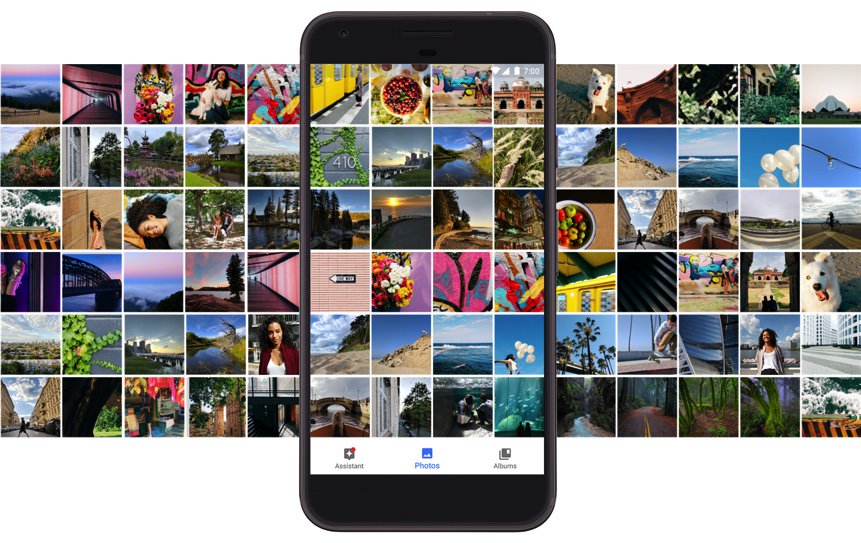
Three months ago, we warned you that RingPlus appeared to be on its last leg and to begin planning your exit strategy. February 11 appears to be their Drop Dead Date although Ting apparently will now absorb all RingPlus accounts that aren’t ported out but under markedly different terms. For openers, there’s a $6 per month charge per phone before you even turn it on. After that, it’s pay-as-you-go for minutes, messages, and data. While the buckets are pooled between all of your phones, the pricing is not cheap. 1,000 minutes will run you $18/month while 2100 minutes will set you back $35/month. 1,000 text messages costs $5/month while 2,000 will run $8/month. 2 gigs of data is $20/month with an additional $10/month for each additional gigabyte or fraction thereof. For a family of four with four phones and modest usage sharing 2100 minutes, 2000 messages, and 2 gigs of data per person, the monthly tab (not including taxes and fees) would be $123 which works out to over $30 per phone. To add insult to injury, Sprint automatically locks RingPlus phones to their network, but you’ll have to move heaven and earth to get them to unlock the devices, even those that were paid in full, without moving to Sprint for several months of "service." Thinking you’ll switch to Sprint’s unlimited 5 phones for $100 unlimited plan, think again. They’ve ended that promotion. So what is a guy or gal to do? We’ve dusted off some of our previous recommendations to provide you an extremely inexpensive solution if you have WiFi access most of the time and do modest mobile calling and texting without WiFi.
Feb. 11 Update: We have some good news and bad news. First, the bad news. It’s still the Sprint network. And now the good news. RingPlus has alerted users that their Drop Dead Date has been postponed until February 21. The migration to Ting is expected next week, well before the Feb. 21 date. And more good news. Sprint is not one to leave money sitting on the table, and yesterday they announced a new "Unlimited" Plan offering 5 lines with unlimited calls, texts, and data for $90 a month. The pricing is good through the end of March, 2018. This is good for a couple of reasons. First, it will keep you on the Sprint network for a month or two in order to qualify all of your existing phones for unlocking. Second, it’s a great deal despite the fine print explaining that unlimited doesn’t really mean unlimited: "Data deprioritization applies during times of congestion. Reqs ebill and new account." Don’t think you’re going to save money by moving fewer phones. The first phone is $50/month. The second is $40. And the next three are free. Our best advice is to wait until after your numbers have been ported to Ting which is better equipped to handle porting than RingPlus while the Titanic is sinking.
Feb. 13 News Flash Verizon introduces unlimited data plans including tethering…
💞 Verizon introduces Unlimited Data Plan w/ Tethering: 4 lines/$180+ 💞 https://t.co/AZqVSplywl #asterisk #voip #MobileComputing pic.twitter.com/iku1m0k0jn
— Ward Mundy (@NerdUno) February 13, 2017
When we introduced Google’s new Pixel phone, we noted that it seemed like a perfect candidate to determine whether we could do everything a normal mobile phone could do using no cellular service. In other words, we wanted to set up the mobile phone basically in Airplane Mode with no SIM card usage and just WiFi connectivity. The goal was to determine what, if anything, we couldn’t do that we’d normally expect to do using a top-of-the-line mobile phone. There was one obvious prerequisite. The mobile phone needed an Internet connection. This could be a normal WiFi network connection, or it could be a connection using an LTE-powered WiFi HotSpot, or it could be a WiFi connection established through tethering to an existing smartphone. It turned out that all three options let us make calls, send and receive text messages, and surf the web with no monthly cost for the additional phone other than the cost, if any, for the WiFi data used.
Why Would You Do Such a Thing? We can think of a number of reasons. The most important considerations for RingPlus users are it’s considerably cheaper than adding another mobile phone to your cellular plan and you’re not tied to Sprint’s lousy network. Typically, adding a mobile phone to many cellphone plans can cost upwards of $50 a month before you make the first call. Second, some may like the flexibility of having BOTH an iPhone and an Android phone because of differences in features and functionality. Finally, it’s a perfect way to introduce younger children to mobile phone technology without spending an arm and a leg on cellular service.
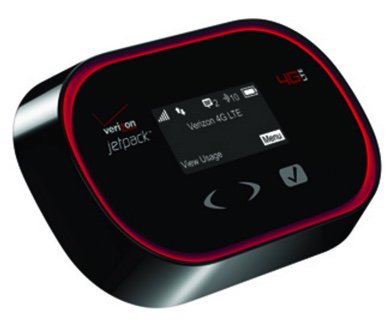
What’s a Typical Use Case for a Non-Cellular Mobile Phone? We can think of several scenarios where this makes perfect sense. We happen to have a Verizon HotSpot that’s still on an unlimited data plan. While it costs almost $100 a month, it lets 7 devices connect to blazing fast LTE service at zero additional cost. If you travel with a group of people that all need mobile phones and that typically travel or work together except when alternative WiFi service is available, this is a real deal. For those with a newer vehicle that includes a WiFi HotSpot or an OBD-II diagnostics port1 and AT&T’s $100 ZTE Mobley device, mobile phones and tablets in the car or truck work perfectly without a cellular connection. And AT&T now lets you add a vehicle’s WiFi hotspot or ZTE Mobley to their unlimited data plan for $40 a month.2 If you have four kids and a spouse, you can do the math. Finally, if you and your family or business associates spend 95% of the day either at home or in an office or car with WiFi, everyone now gets the flexibility of a mobile phone with no recurring cost just like the good ol’ days with RingPlus. Driving our daughter to the school bus stop in our old neighborhood recently, we happened to check for WiFi access because the cellular service was so horrible. There were 27 separate WiFi HotSpots, all of which were secured. Seems we weren’t the only ones having difficulty with cell service in the neighborhood.

VoIP Requirements for a Non-Cellular Mobile Phone. As we’ve said many times, the beauty of VoIP technology is not having to put all your eggs in one basket. So there’s really no reason to deploy a single technology. In the Google world, that means you can take advantage of Google’s rich collection of messaging applications such as Hangouts and Allo and Duo while also deploying Skype, Facebook Messenger, WebRTC and SIP-based services to connect to traditional hosting providers and PBXs such as Incredible PBX and PIAF5 powered by 3CX (shown below). Today we’ll walk through the setup process for all of these. When we’re finished, you’ll have crystal-clear phone calls as well as SMS messaging with something you never got with RingPlus, multiple layers of redundancy.
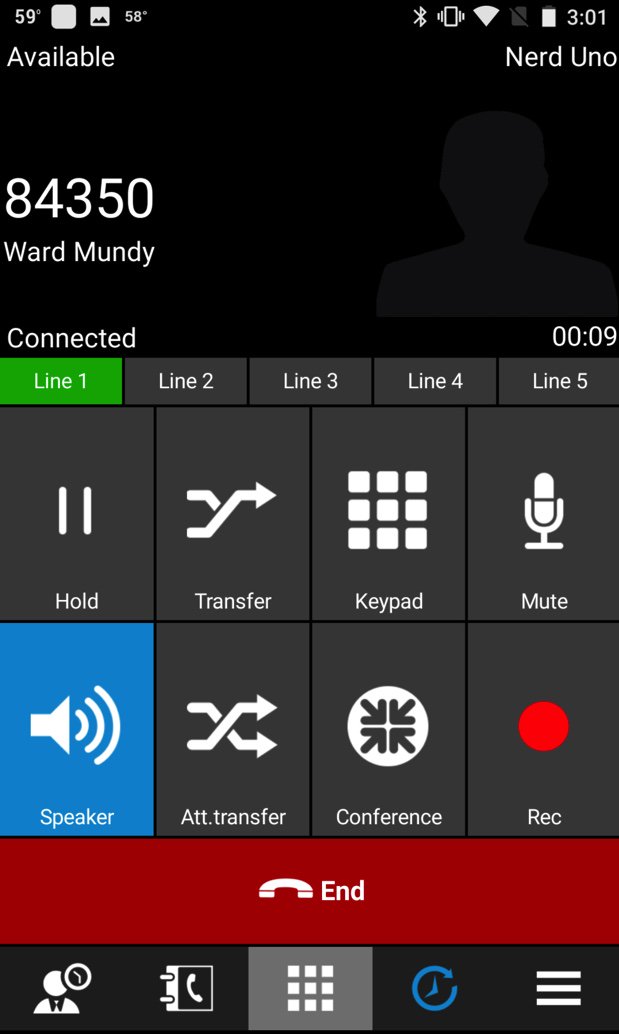
What Does All of this Really Cost? You obviously have to purchase a mobile phone but, if you’ve been with RingPlus, you already have one or more phones in hand. When we’re finished today, you’ll be able to make calls as well as send and receive SMS messages in multiple ways. Calls and SMS messages to U.S. and Canada destinations are free using Google’s services. Skype-to-Skype calls worldwide are free. SMS messages sent and received using Pinger/Textfree as well as Facebook Messenger are also free of charge. For calls made using a SIP softphone or WebRTC connection to an Incredible PBX or PIAF5 PBX, you only pay the standard VoIP tariff for the calls, typically less than a penny a minute for domestic calls. Calls to many international destinations are free using FreeVoipDeal.com.
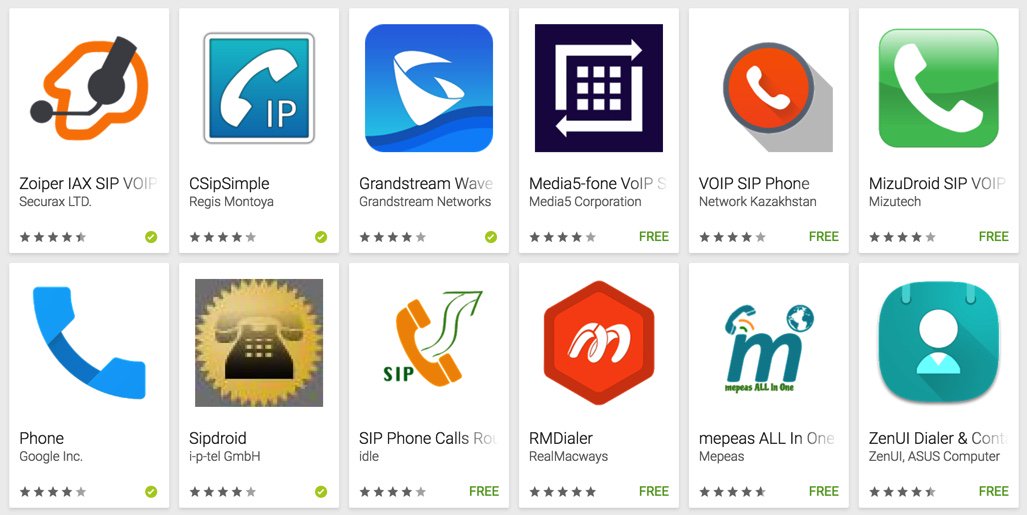
Numerous SIP softphones for Android devices are available at no cost including Zoiper, CSipSimple and many others. Still others are available for less than $10 and can be installed on as many Android devices as you happen to own, e.g. Acrobits and Bria. And, of course, the 3CX softphone above is free with PIAF5. Stick with softphones with 4 stars or better!
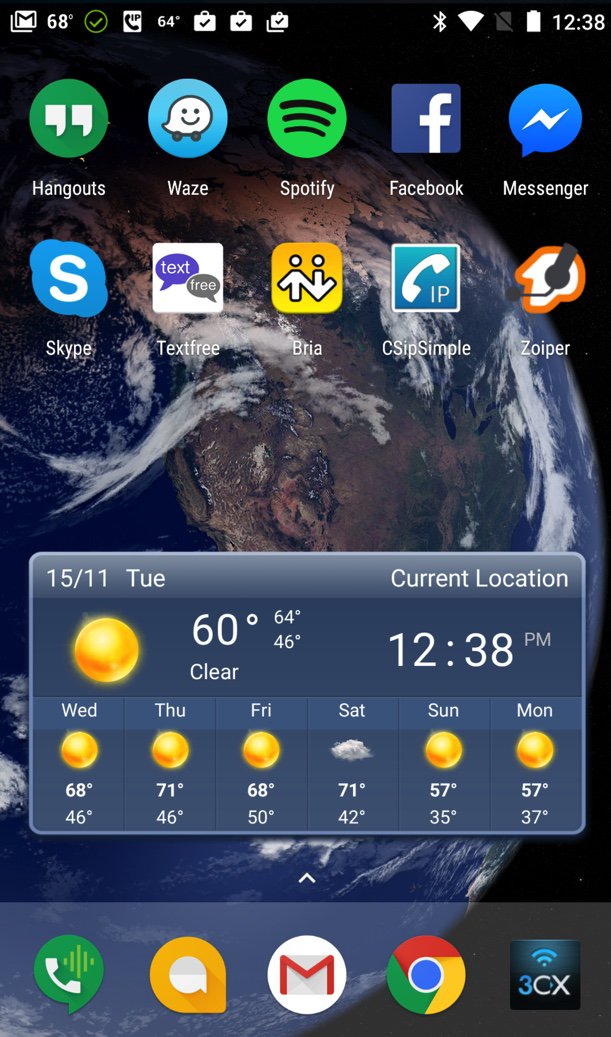
Putting the VoIP Pieces in Place. Once you have your SIM-free phone in hand, switch to Airplane mode and then reactivate WiFi. Go through the basic setup to establish a WiFi connection in your home or office. Then it’s time to add the components you’ll need to turn your smartphone into a fully-functioning VoIP phone. If they’re not already on your phone, download the following apps from the Google Play Store or the iPhone App Store: Hangouts, Hangouts Dialer, Allo, Duo, Skype, Facebook Messenger, Textfree, Port Knocker,3 DynDNS or FreeDyn (not free!) Client,4 and the VoIP softphones of your choice.
We recommend reserving the Google Voice number associated with the primary Gmail account on your smartphone for use with Hangouts, Allo, and Duo. The reason is that you can’t really use these services satisfactorily while also using the same Google Voice number with Google Chat and the Asterisk® XMPP module. Our previous Nerd Vittles tutorial will walk you through obtaining multiple Google Voice numbers to use with with your smartphones or Incredible PBX and PIAF5.
Pictured above is the layout we actually use. Keep in mind that the bottom row stays in place as you scroll through other screens on your smartphone. Long-press on an existing icon on the bottom row and drag it off the row. Then long-press on the app you want to add and drag it onto the bottom row. We recommend replacing the default Phone and Messaging apps with the Hangouts Dialer and Allo (as shown). We also include a SIP softphone on the bottom row which gives you multiple ways to place and receive calls.
[soundcloud url="https://api.soundcloud.com/tracks/293184354″ params="auto_play=false&hide_related=false&show_comments=true&show_user=true&show_reposts=false&visual=true" width="400″ height="300″ iframe="true" /]
But I Really Want a Cellphone Provider. Yes, we hear you. Backup cellphone service has its virtues. Here are 3 Android phones from Google ranging in price from $199 to $649 with easy payment plans ranging from $8 to $27 a month. Each gives you unlimited domestic calling as well as unlimited domestic and international texting with multiple cellphone carriers. Rates start at $20 a month plus $10/GB for data. You even get bill credits for any data you don’t use. Project Fi is worth a careful look if you’re on a budget and limit most of your data usage to WiFi connections. Here’s a great article explaining the pro’s and con’s of Project Fi after six months of actual usage.
Bottom Line. On our smartphone we have the following services activated and functioning reliably: Google Voice with Hangouts, Allo and Pinger for SMS messaging, Bria for VoIP calling with Incredible PBX for XiVO, CSipSimple and Zoiper for SIP calling with Incredible PBX 13, Facebook Messenger, Skype, plus the 3CX Dialer for calling with PIAF5 powered by 3CX. That translates into 5 different phone lines supporting free incoming and outgoing voice calls, plus 2 additional lines for free SMS messaging, plus the Facebook and Skype services to reach over a billion people worldwide at no cost. And both the PIAF5 and XiVO lines can support calls via multiple trunks using customized dial prefixes. Even with all these services running, most smartphones have sufficient horsepower to make it through a busy day. What are you waiting for? Make the switch!
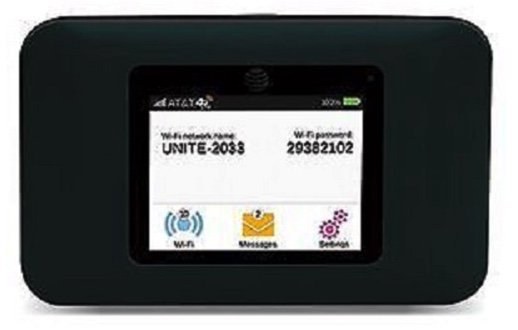
Update: Another WiFi HotSpot Option. We’ve now had an opportunity to test yet another WiFi HotSpot solution. This one uses AT&T’s Unite Pro, available from Amazon for $65. Rather than sign up for AT&T’s $50 monthly pay-as-you-go plan, you can use this with StraightTalk with minimal effort. That lets you purchase 2 months of service and 4GB of BYOT data for $40. Be sure to purchase the Mobile HotSpot Plan and not a cellphone plan! To get started, visit your neighborhood WalMart and pick up the StraightTalk Bring Your Own Tablet SIM Activation Kit. Do NOT mistakenly buy the BYO Phone Activation Kit. It won’t work! The kit includes a 1GB Data service plan that’s good for 30 days from activation. With your Unite Pro in hand, insert the AT&T SIM card that came with the tablet activation kit. Turn on the HotSpot and select it as your WiFi connection using your desktop PC. The name of the HotSpot and its WiFi password will be displayed on the main screen of the HotSpot. From your desktop, use a browser to log into 192.168.1.1. The default administrator password is attadmin. Goto Settings -> Mobile Broadband -> APN and add a new APN with name: StraightTalk and APN: tfdata. After saving it, select it as active APN.
Now switch back to your desktop PC and change your default WiFi connection so that you can access the Internet. Visit http://STBYOT.com to register your StraightTalk SIM card and activate your 1GB data plan. You’ll need your SIM card number (at the bottom of the big card from which you removed the MicroSIM). Then you’ll need your scratch-off data service PIN. Once you complete the setup and register with StraightTalk, activate your service. Now turn off your HotSpot and turn it back on. It should display a 4G connection at the top left of the screen. At this point, reselect the HotSpot as your WiFi connection for your desktop PC. Then try to make a connection to a web site on the Internet, and you should be in business. For conservative data usage, 4GB for $40 with 2 months of service is the best deal we’ve been able to find for those that prefer pre-paid cellular service.
Published: Thursday, February 9, 2017 Updated: Friday, February 17, 2017

Need help with Asterisk? Visit the PBX in a Flash Forum.
Special Thanks to Our Generous Sponsors
FULL DISCLOSURE: ClearlyIP, Skyetel, Vitelity, DigitalOcean, Vultr, VoIP.ms, 3CX, Sangoma, TelecomsXchange and VitalPBX have provided financial support to Nerd Vittles and our open source projects through advertising, referral revenue, and/or merchandise. As an Amazon Associate and Best Buy Affiliate, we also earn from qualifying purchases. We’ve chosen these providers not the other way around. Our decisions are based upon their corporate reputation and the quality of their offerings and pricing. Our recommendations regarding technology are reached without regard to financial compensation except in situations in which comparable products at comparable pricing are available from multiple sources. In this limited case, we support our sponsors because our sponsors support us.
 BOGO Bonaza: Enjoy state-of-the-art VoIP service with a $10 credit and half-price SIP service on up to $500 of Skyetel trunking with free number porting when you fund your Skyetel account. No limits on number of simultaneous calls. Quadruple data center redundancy. $25 monthly minimum spend required. Tutorial and sign up details are here.
BOGO Bonaza: Enjoy state-of-the-art VoIP service with a $10 credit and half-price SIP service on up to $500 of Skyetel trunking with free number porting when you fund your Skyetel account. No limits on number of simultaneous calls. Quadruple data center redundancy. $25 monthly minimum spend required. Tutorial and sign up details are here.
 The lynchpin of Incredible PBX 2020 and beyond is ClearlyIP components which bring management of FreePBX modules and SIP phone integration to a level never before available with any other Asterisk distribution. And now you can configure and reconfigure your new Incredible PBX phones from the convenience of the Incredible PBX GUI.
The lynchpin of Incredible PBX 2020 and beyond is ClearlyIP components which bring management of FreePBX modules and SIP phone integration to a level never before available with any other Asterisk distribution. And now you can configure and reconfigure your new Incredible PBX phones from the convenience of the Incredible PBX GUI.
 VitalPBX is perhaps the fastest-growing PBX offering based upon Asterisk with an installed presence in more than 100 countries worldwide. VitalPBX has generously provided a customized White Label version of Incredible PBX tailored for use with all Incredible PBX and VitalPBX custom applications. Follow this link for a free test drive!
VitalPBX is perhaps the fastest-growing PBX offering based upon Asterisk with an installed presence in more than 100 countries worldwide. VitalPBX has generously provided a customized White Label version of Incredible PBX tailored for use with all Incredible PBX and VitalPBX custom applications. Follow this link for a free test drive!
 Special Thanks to Vitelity. Vitelity is now Voyant Communications and has halted new registrations for the time being. Our special thanks to Vitelity for their unwavering financial support over many years and to the many Nerd Vittles readers who continue to enjoy the benefits of their service offerings. We will keep everyone posted on further developments.
Special Thanks to Vitelity. Vitelity is now Voyant Communications and has halted new registrations for the time being. Our special thanks to Vitelity for their unwavering financial support over many years and to the many Nerd Vittles readers who continue to enjoy the benefits of their service offerings. We will keep everyone posted on further developments.
Some Recent Nerd Vittles Articles of Interest…
- OBD-II port is mandatory on vehicles sold in the U.S. since 1996. But you may not need a vehicle at all. 🙂 [↩]
- DirecTV service is required to take advantage of AT&T’s Unlimited Data Plan offering. [↩]
- We strongly recommend setting up PortKnocker with the credentials found in /root/knock.FAQ on your Incredible PBX server. This will provide a back door to assure that you aren’t inadvertently locked out of your server by the Incredible PBX firewall while you are traveling. [↩]
- You’ll need to set up a dynamic DNS client on your Android phone in order to keep your IP address updated and whitelisted with the Incredible PBX firewall. Unfortunately, this feature requires the FreeDyn paid app on the iPhone. [↩]


 JUST RELEASED: Visit the Incredible PBX Wiki
JUST RELEASED: Visit the Incredible PBX Wiki
VoIP-on-the-go from a mobile device can work just fine. In my attempts to be self sustaining, rather than tied to a public hotspot, I initially used the FreedomPop "FreedomSleeve" hotspot designed for my iPod Touch Gen 4. It was pretty amazing. The iPod snuggled-right-into the Sleeve, and you ended up with a form-factor only a bit fatter than the iPhone 4 of the day. Sure, it was WiMax only, and sure, incoming was wonky, and sure, it didn’t work too well in a moving car, but in my Chicago locale it was pretty darned reliable. I could walk down the street texting folks, and chatting up the GF for free using (1) the then-free Vonage app option, (2) via Google Voice using a VoIP client on the iPod registering with my home PBX, or (3) via Google Voice using the Obion app and my Obi100. Or, I could pay chump-change and use one of my many fine VoIP providers.
Fast-forward to now. I have 2 cheap LG Volts (one was a parts-bin special that I fixed — just ignore the shattered glass screen) on FreedomPop and each (after "Freedom Friends and gifting myself the max data from other FP accounts) give me 1400MB of usable Sprint LTE data. I also acquired 2 FP "Global" (non-LTE) GSM SIMs for a penny each, and just got one of the newer FP LTE (AT&T-only) SIMS for $1.99. They can go in my cheap-from-eBay used Moto E or MiFi 2, and each after fun-and-games gives me 1100MB of AT&T (or, in the case of the "global" SIMS, T-Mo) data.
Is it cumbersome having to carry 2 devices? Sure. But, hey: free. And besides, it’s a hobby. The Hangouts dialer using this setup is, in some respects, better than the old RingPlus Radio-routed cellular calling.
Me = happy camper.